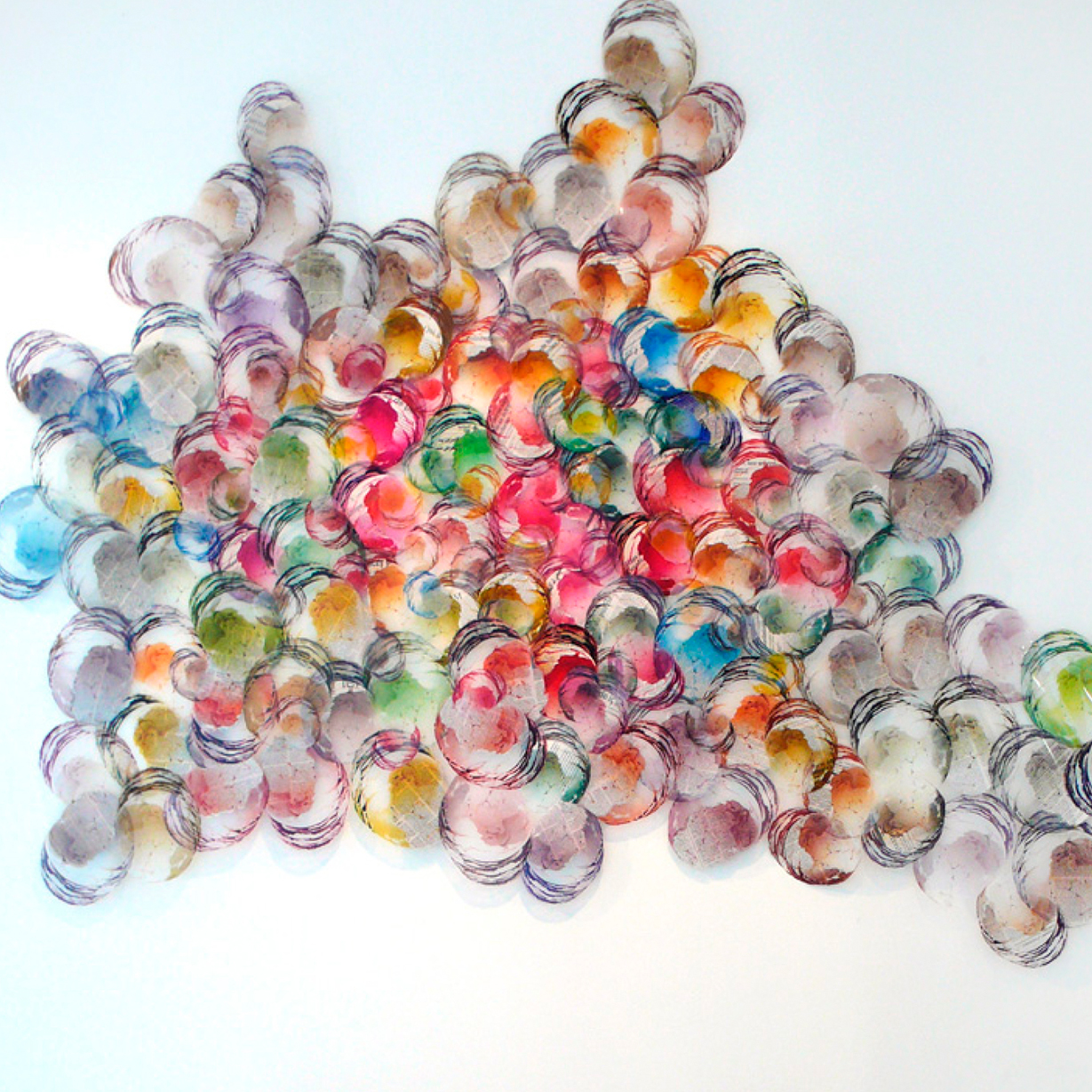Hadmut Bittiger zeigte im Rahmen der Ausstellung Tel Aviv – Berlin in Transit im Benyamini Center Tel Aviv eine audiovisuelle Rauminstallation über die Diversität der Kulturen in der Großstadt. Tel Aviv und Berlin sind nicht nur kosmopolitisch betrachtet bedeutungsvolle Städte, die Migration anziehen. Ihre Cafés, Bars und Bürgersteige, ihre lebendigen, öffentlichen Plätze quellen über mit diversen Bevölkerungsgruppen und Kulturen, von denen sich einige noch im Nirgendwo zwischen Bleiben und Abreise befinden. Resultiert daraus eine zunehmende Abgrenzung oder Festigung des Eigenen und des Anderen? Sehen die alten und neuen Bewohner die Vielfalt der Kulturen als Chance? Hadmut Bittiger vergleicht in dieser Doppelausstellung die Sicht aus Berlin mit der aus Tel Aviv, und deckt viele Gemeinsamkeiten dieser jungen, pulsierenden Städte auf. Sie trifft sich mit Menschen verschiedener Nationen und stellt ihnen allen dieselben Fragen:
„Fühlen Sie sich als Teil Berlins?“
„Wie hat Migration das kulturelle Leben in Berlin geformt?“
Hadmut Bittiger zeichnet die Gespräche und Antworten auf und präsentiert daraus die Quintessenz in einer Installation.
In the context of the exhibition TEL AVIV – BERLIN IN TRANSIT at the Benyamini Center Tel Aviv, Hadmut Bittiger presented an audiovisual spatial installation on the diversity of cultures in the city. Not only from a cosmopolitan point of view, Tel Aviv and Berlin are important cities that attract migration. Their cafés, bars, and sidewalks, their lively public spaces abound with diverse population groups and cultures, some of which are still in the no man’s land between staying and leaving. Does this result in growing demarcation or consolidation of Self and Other? Do old and new residents see cultural diversity as an opportunity? In this double exhibition, Hadmut Bittiger compares the Berlin perspective with that of Tel Aviv, discovering many commonalities between these two young, vibrant cities.
She conducts interviews with Berliners from different origins and asks them all the same questions:
“Do you feel you are part of Berlin?”
“How has migration shaped cultural life in Berlin?”
Hadmut Bittiger records these messages and highlights their essence in her installation.
Stimmen/Voices
(Auszüge, excerpts)
„Ich finde, am Anfang merkt man, dass Berlin eine offene Stadt ist. Viel Kultur, viele Nationalitäten, viele Touristen. Die Menschen leben individuell. Nach z.B. 10 Jahren merkt man, dass es viele verschiedene Kulturen gibt, die parallel leben.“ Chinese, Arzt, seit 2002 in Berlin
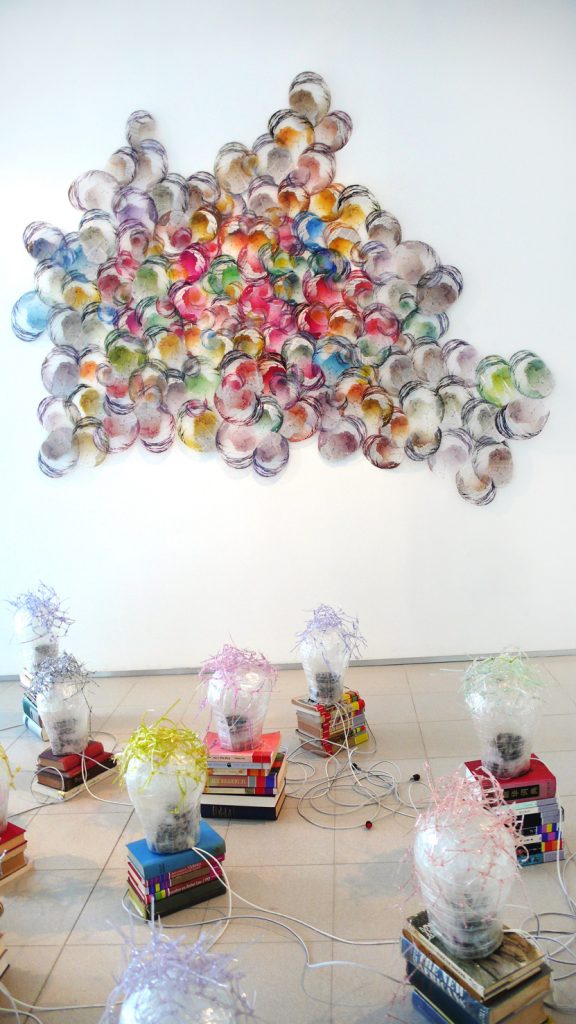
Jeder vierte Einwohner von Berlin hat keinen deutschen Pass. Ist die Vielfalt der Kulturen eine Chance oder resultiert daraus eine zunehmende Abgrenzung untereinander? Zwanzig Menschen verschiedener Nationalitäten wurden gebeten, dazu Meinungen in ihrer Muttersprache abzugeben. Die Originalstimmen sind über Soundmodule in den Köpfen auf Knopfdruck zu hören. Die Köpfe selbst stellen durch Ihre verschiedenfarbigen Verknüpfungen Akzeptanz und Schnittstellen der Gemeinsamkeiten dar.
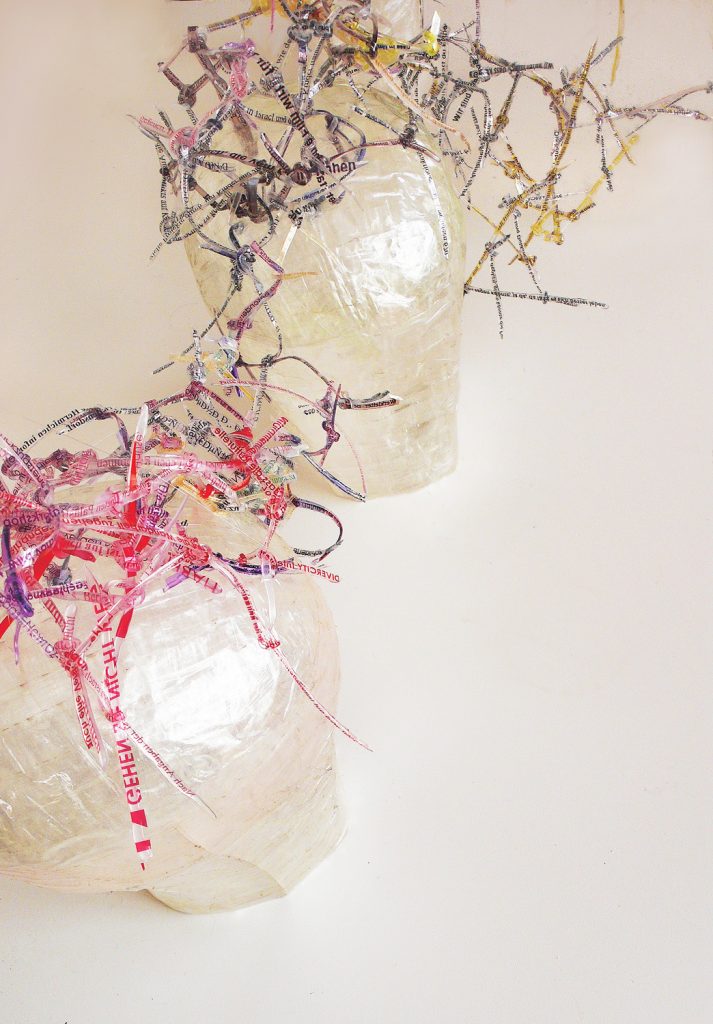
Bunte Weltkugeln aus bedruckter Folie, in denen sich ausschnittsweise Texte internationaler Zeitungen befinden, bewegen sich im Original- Stadtumriss von Berlin. Sie bezeugen die dynamische und weltoffene Vielfalt dieser Stadt- einer jungen Metropole voller bewegter Geschichte über Migration und kulturellem Wechsel.
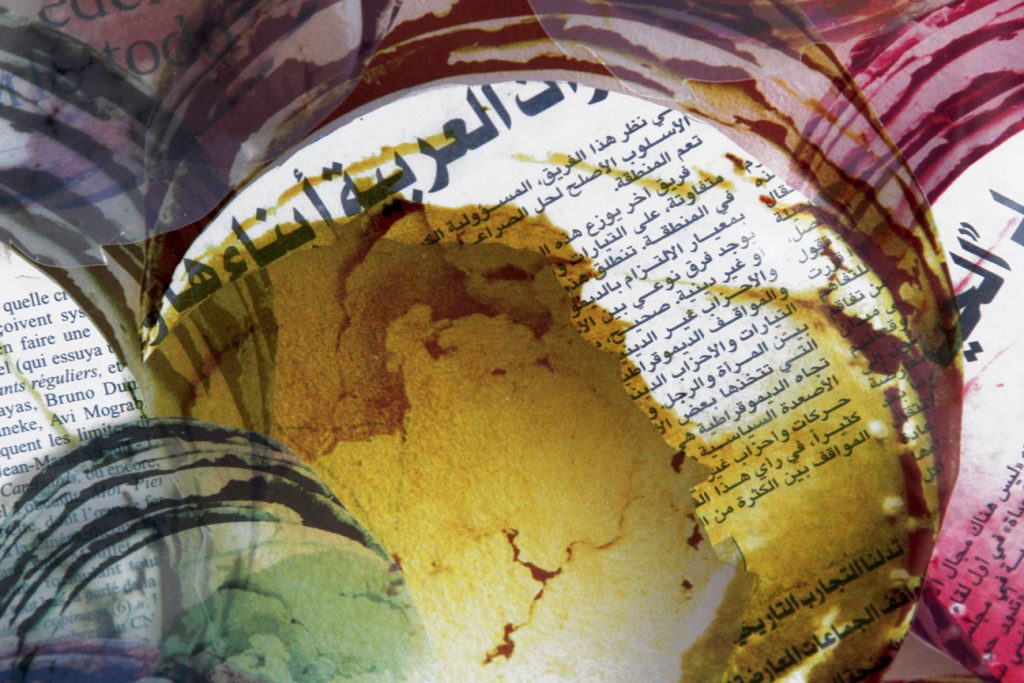
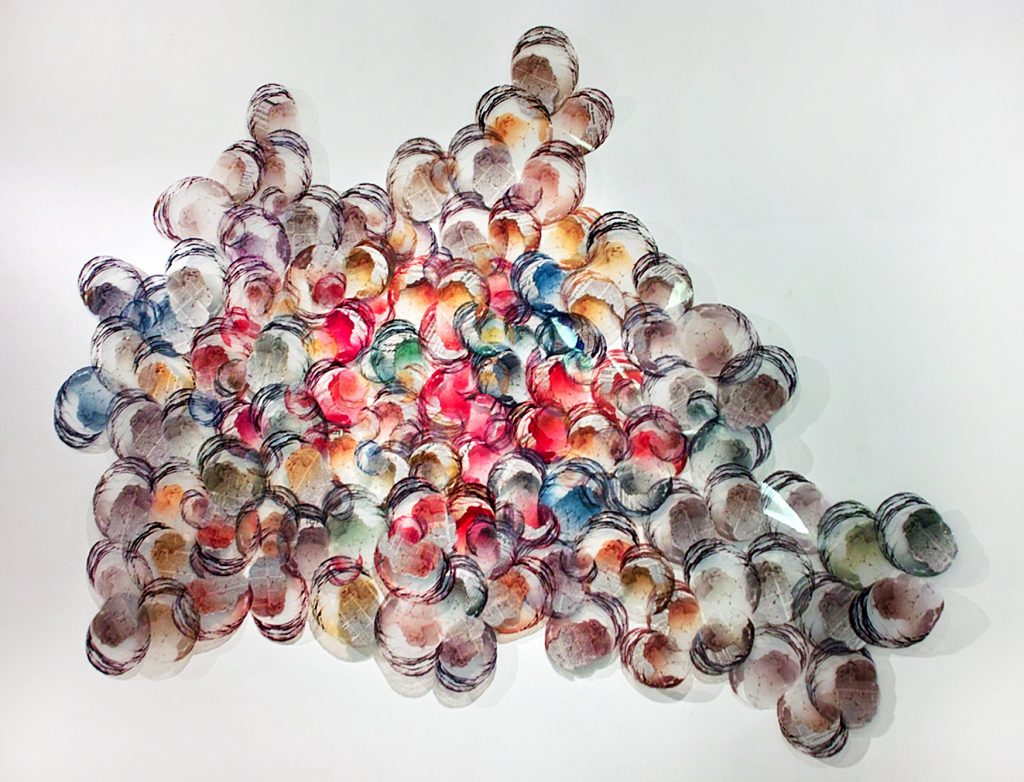
TEL AVIV – BERLIN IN TRANSIT
Multimedia Installation
2013
Material: Köpfe aus Tesafilm, Folie bedruckt, Elektrokabel, 20 Soundmodule, 20 Lautsprecher, internationale Bücher, heads of sellotape, printed foil, 20 soundmodules, 20 speakers, international books
Fotos: Wolfgang Schilke
Weitere Informationen zu TEL AVIV-BERLIN IN TRANSIT siehe unter › AUSSTELLUNGEN
